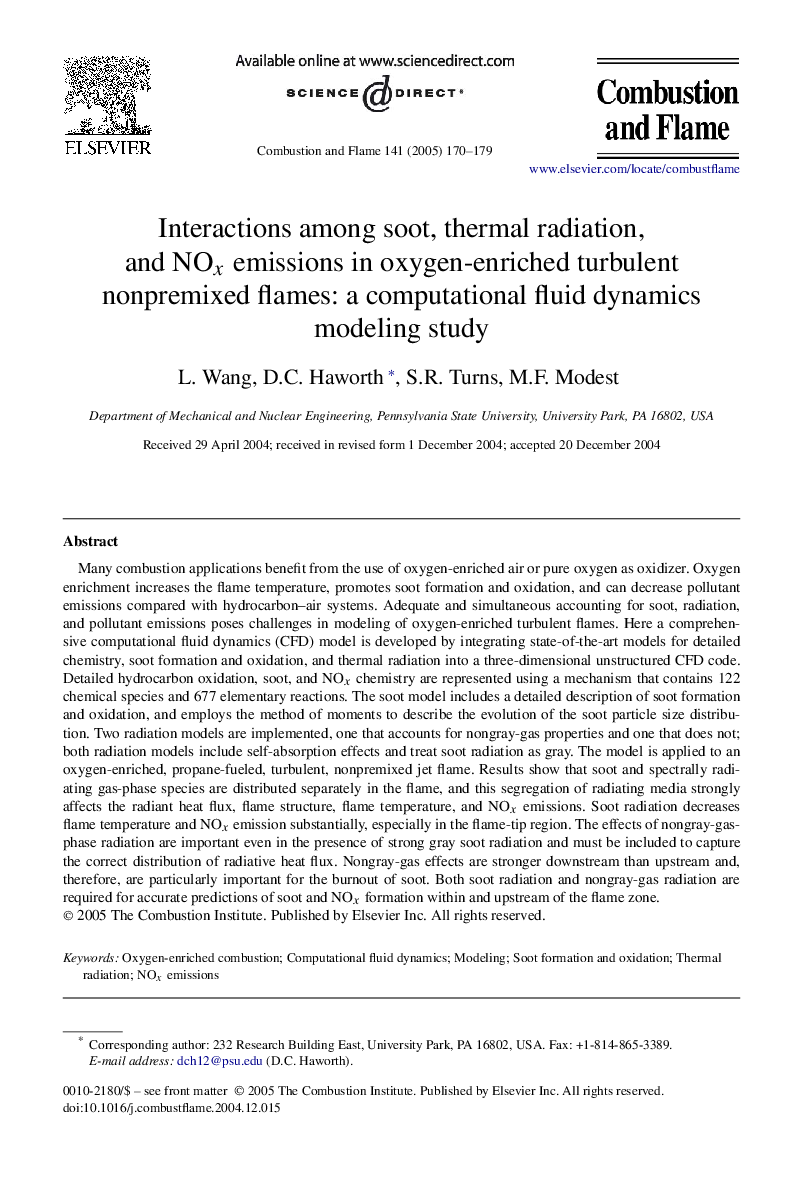| کد مقاله | کد نشریه | سال انتشار | مقاله انگلیسی | نسخه تمام متن |
|---|---|---|---|---|
| 9624526 | 457901 | 2005 | 10 صفحه PDF | دانلود رایگان |
عنوان انگلیسی مقاله ISI
Interactions among soot, thermal radiation, and NOx emissions in oxygen-enriched turbulent nonpremixed flames: a computational fluid dynamics modeling study
دانلود مقاله + سفارش ترجمه
دانلود مقاله ISI انگلیسی
رایگان برای ایرانیان
کلمات کلیدی
موضوعات مرتبط
مهندسی و علوم پایه
مهندسی شیمی
مهندسی شیمی (عمومی)
پیش نمایش صفحه اول مقاله

چکیده انگلیسی
Many combustion applications benefit from the use of oxygen-enriched air or pure oxygen as oxidizer. Oxygen enrichment increases the flame temperature, promotes soot formation and oxidation, and can decrease pollutant emissions compared with hydrocarbon-air systems. Adequate and simultaneous accounting for soot, radiation, and pollutant emissions poses challenges in modeling of oxygen-enriched turbulent flames. Here a comprehensive computational fluid dynamics (CFD) model is developed by integrating state-of-the-art models for detailed chemistry, soot formation and oxidation, and thermal radiation into a three-dimensional unstructured CFD code. Detailed hydrocarbon oxidation, soot, and NOx chemistry are represented using a mechanism that contains 122 chemical species and 677 elementary reactions. The soot model includes a detailed description of soot formation and oxidation, and employs the method of moments to describe the evolution of the soot particle size distribution. Two radiation models are implemented, one that accounts for nongray-gas properties and one that does not; both radiation models include self-absorption effects and treat soot radiation as gray. The model is applied to an oxygen-enriched, propane-fueled, turbulent, nonpremixed jet flame. Results show that soot and spectrally radiating gas-phase species are distributed separately in the flame, and this segregation of radiating media strongly affects the radiant heat flux, flame structure, flame temperature, and NOx emissions. Soot radiation decreases flame temperature and NOx emission substantially, especially in the flame-tip region. The effects of nongray-gas-phase radiation are important even in the presence of strong gray soot radiation and must be included to capture the correct distribution of radiative heat flux. Nongray-gas effects are stronger downstream than upstream and, therefore, are particularly important for the burnout of soot. Both soot radiation and nongray-gas radiation are required for accurate predictions of soot and NOx formation within and upstream of the flame zone.
ناشر
Database: Elsevier - ScienceDirect (ساینس دایرکت)
Journal: Combustion and Flame - Volume 141, Issues 1â2, April 2005, Pages 170-179
Journal: Combustion and Flame - Volume 141, Issues 1â2, April 2005, Pages 170-179
نویسندگان
L. Wang, D.C. Haworth, S.R. Turns, M.F. Modest,